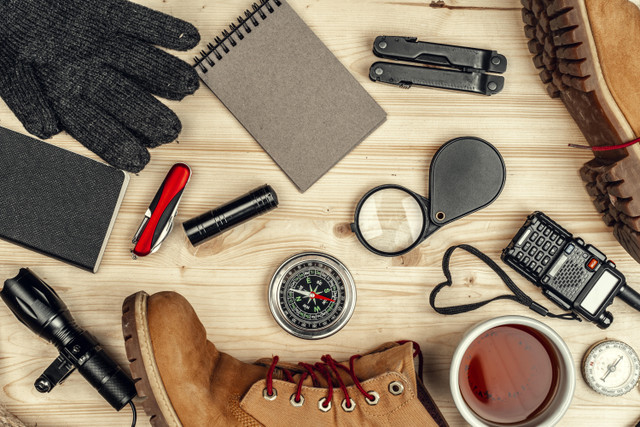Bug In Bag: 9 Items You Need to Include to Survive Any Disaster
Posted by ZeroDayGear.com on Apr 16th 2020
Though bug out bags are a common investment for areas prone to natural disasters, bug in bags are just as important. Blizzards, floods, pandemics, and civil collapse are scenarios where bugging out might not be the best option. 
Extra supplies can always be kept in your pantry or garage, but a bug in bag is designed to keep the essentials mobile, so you can evacuate to the safest room in the house as needed. Here are nine items you’ll want to include in a bug in bag.
1. Shelf-Stable Food
Food seems obvious, but putting some thought into which food you get makes a real difference. Canned food can provide an assortment of products that can last for years. However, specialized emergency food supplies are much lighter and can last up to 25 years when completely sealed.
2. Water Filter and Water Bottles
Municipal water may become unreliable if a disaster damages its systems or causes employees to stop maintaining it. Bottled water is helpful for a few days, but a portable water filter or water filtration system in your bug in bag is a better long-term investment. Get extra filters for whatever device you choose.
3. Dehumidifier and Power Source
Though dehumidifiers need an alternative power source to run during a power outage, they are good for collecting water. The water they collect can be clean enough for drinking if the device is kept clean and the water is filtered before use. Get a new dehumidifier for this instead of relying on one that’s already been in use around the house.
4. Medical Supplies
Some toiletries are a luxury in the face of an emergency, but you’ll at least want basic medications and a first aid kit. Get a first-aid kit that includes splints and arm slings for fracture care. Though you’re unlikely to break any bones if you live in a single-story home, keep in mind that accidents can happen with equipment and furniture.
5. Portable Toilets
If water supplies are disrupted or you’re forced to shelter in a space with no bathroom access, portable toilets will be essential. A portable toilet designed for camping works well for indoor use. Get extra bags to last at least a week until you can figure out another option.
6. Paracord
You’re unlikely to need a huge length of rope, but one or two paracord bracelets go a long way if you need to secure a tarp or rig a solar oven. Make sure you’re familiarized with how to unwrap and use them.
7. Small Tools
From garage doors to kitchen sinks, everything mechanical around the house requires repair or replacement eventually. Having small tools and a knife in a bug in bag could make all the difference. Get an assortment of keychain-sized tools and multitools, along with a variety of screwdriver shapes and sizes for large and small devices alike.
8. Lock Picks and Bumper Keys
Though safes are a great place to store important paperwork and guns, they can be a major hassle if the key is lost or damaged. Having a high-quality lock pick or bumper key set on-hand can make all the difference in an emergency. You might not have the time or resources necessary to call someone else, especially if a bug in situation suddenly turns into a bug out emergency.
9. Copies of Essential Documents
If your safe is inaccessible or your documents end up damaged, you’ll want to have copies of essential documents available. Drivers’ licenses, passports, and birth certificates are typically not valid in copy form, but they can help you get new official documents once the disaster is over.
Protecting Yourself and Your Family
Many of the bug in items on this list are similar to a bug out bag, and it’s important to remember that a bug in bag can also be taken outside in an emergency. However, understanding the differences between the two scenarios is essential. In a bug in situation, you’ll at least have the security of your own roof or prepping shelter over your head.
A small, lightweight bug in bag is essential for evacuating to higher floors or a single room in a crisis. Floods, blizzards or even pandemics can result in shelter-in-place scenarios, so take the time to prepare everything you need for a crisis.
